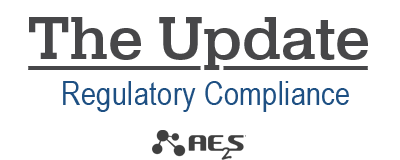Water systems of all sizes have been working on achieving compliance with the Lead and Copper Rule Revisions (LCRR) in 2024 and now the updated Lead and Copper Rule Improvements (LCRI). Though utility leadership certainly knows the importance of compliance, for many systems it has been an uphill battle to get property owners to understand the importance of helping water providers complete the lead service line inventory.
LCRR and LCRI public outreach efforts have focused on residential and commercial property owners, as both are important to the inventory process. Older properties may have legacy lead service lines that were installed before the lead pipe ban. As water systems continue to make progress on their service line inventory in 2025, here are some suggestions for messaging to commercial property owners.
- Provide instructions for identifying lead, galvanized steel, copper, and plastic service lines and a way to share that information with the water system so the property is added to the inventory.
- Let property owners know what portion of the service line they are responsible for replacing, if lead or galvanized pipes are found. In some communities, property owners are responsible for the section of the water service line from the curb stop into the building. In other communities, property owners are responsible for the entire service line, meaning from the connection to the watermain in the public right-of-way to inside the building. In less common instances, the entire service line is owned by the public utility. Some utilities choose to bear the cost of an entire service line replacement in support of public health.
- Review building records to determine the construction date and any plumbing permits on file. If the property was built or had the service line replaced after the lead ban, it should be lead-free—but that is not guaranteed.
- Identifying lead now can help owners avoid compliance issues and protect the health of tenants, employees, and customers.
Other Considerations for Property Owners
When it comes to owning, selling, or insuring commercial and residential properties, the presence of lead service lines may have broader implications beyond health concerns. Here are a few key factors for all property owners to keep in mind:
- Property Value and Marketability: If the building has a lead service line, it may lower the appraised value of the property and deter potential buyers or tenants due to health concerns or anticipated replacement costs.
- Insurance Considerations: Some insurance companies may exclude coverage related to lead contamination, particularly if the issue was previously identified and not addressed. While standard property insurance typically doesn’t cover pipe materials, lead-related health risks or water damage caused by corroded pipes could raise liability concerns. Commercial property owners may be required to disclose known lead service line issues during underwriting or renewal.
- Inspections and Disclosures: The State of Iowa passed a law this year to require the disclosure of lead service lines in real estate disclosures. The law goes into effect January 1, 2026. Even without a law requiring disclosure, a building inspection or environmental assessment may flag the presence of lead or galvanized plumbing during the sale or transfer of a commercial property. Replacing the service line proactively can make a property more attractive to buyers and help avoid renegotiation or closing delays.
If you have questions about LCRI public outreach, contact Rachel Schultz, AE2S Consultant and LCRI Project Manager.

